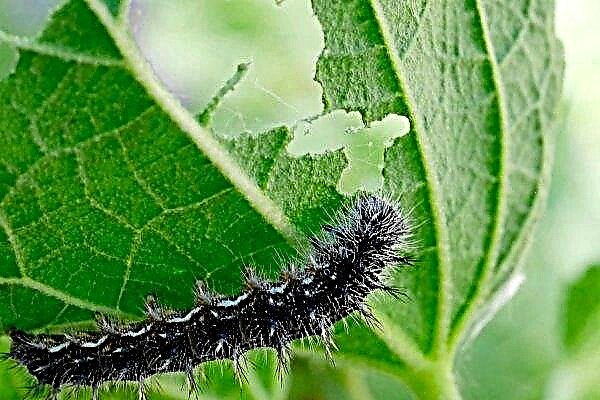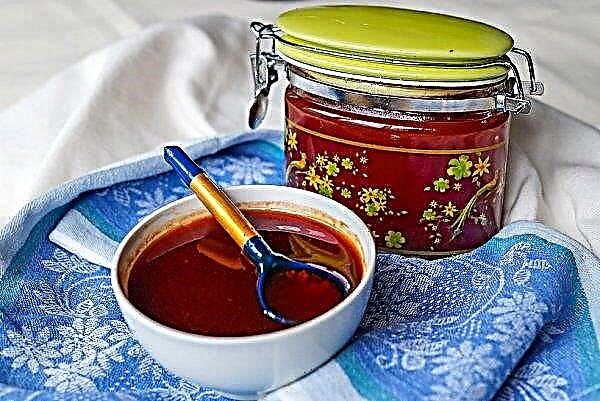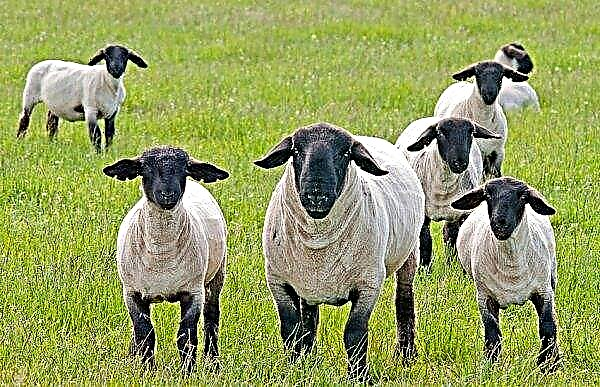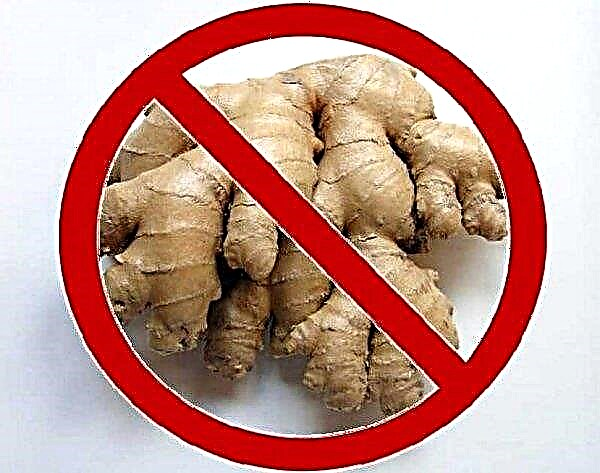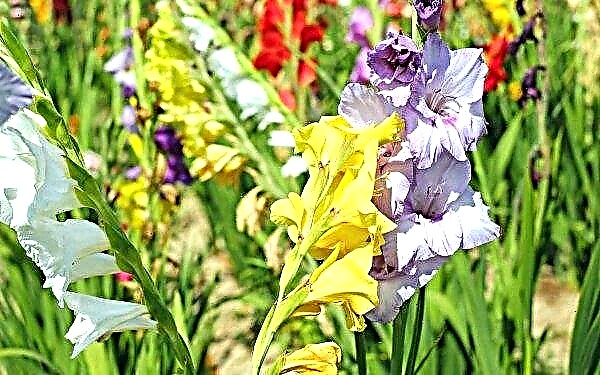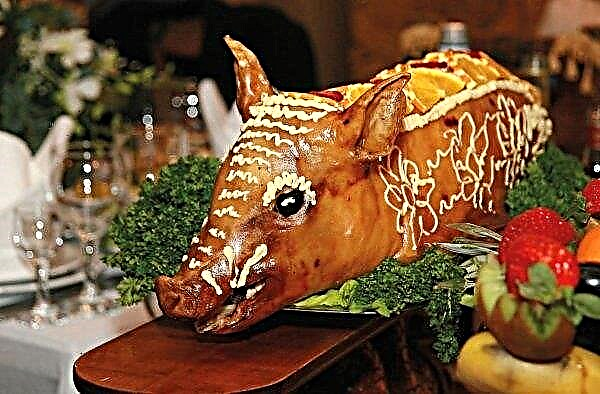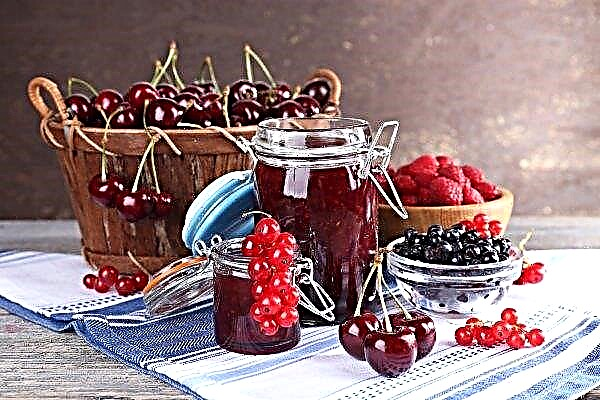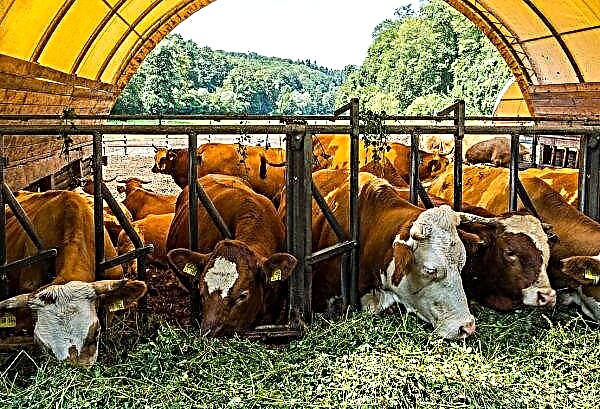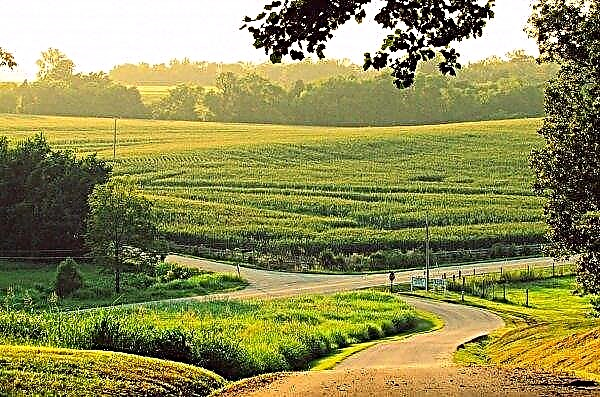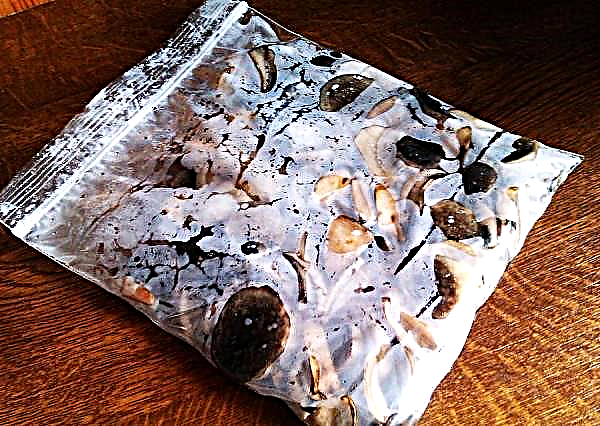Juicy zucchini are the ingredients of many culinary dishes, so they are grown by many gardeners. One of the best varieties of this culture, which gives high yields of large fruits, is the zucchini Aral F1. The article provides a detailed description of the variety, its advantages and disadvantages, lists the methods of growing plants, the basic rules for planting and care, as well as recommendations for the collection and use of the crop.
History of selection of vegetable marrow Aral F1
This variety was bred in 2009 by Japanese breeders. They set a goal to get a new variety of zucchini, which would be unpretentious in care and gave a plentiful harvest of delicious vegetables in the earliest possible time.

The Aral F1 variety obtained as a result of selection fully corresponds to the listed characteristics, and its fruits are in demand in Asia, the USA and Europe. In addition, this variety of zucchini is actively grown in the North Caucasus region of Russia, as well as in Ukraine.
Did you know? In Europe, zucchini began to be cultivated in the 16th century - initially these plants were grown only for decorative purposes.
Description and characteristics of the variety
Variety Aral F1 is usually grown in open ground, but it can be cultivated in a greenhouse.
 Plants are characterized by rapid growth and ovary formation, but when grown in a greenhouse, care must be taken to timely pollination of the bushes by attracting insects to the greenhouse.
Plants are characterized by rapid growth and ovary formation, but when grown in a greenhouse, care must be taken to timely pollination of the bushes by attracting insects to the greenhouse.
Main characteristics of zucchini Aral F1:
- The variety belongs to early ripening - the first crop can be harvested approximately 35–40 days after emergence.
- The bush is compact, consists of half-stalked stems on which medium-sized green leaves are located.
- Zucchini has a cylindrical shape, on the outside it is covered with a dense light green peel with small white spots.
- In the stage of technical maturity, the peel of the vegetable is soft and slightly ribbed. At the stage of biological ripeness, it becomes dense and solid.
- The yield of this variety is 10 kg / m². The length of ripe fruits is 15–18 cm with a diameter of about 6 cm, and the mass is up to 800 g. 5-6 squash are collected from each bush.
- The pulp of the vegetable has a dense structure, very tender and juicy. Inside are cream-colored seeds - they are large in size and elliptical in shape.
- Ripe fruits are characterized by excellent taste and pleasant fresh aroma - their pulp contains about 3% sugar and up to 5.4% dry matter.
Did you know? Among people all over the world, not a single case of the occurrence of food allergies to zucchini was recorded.
Advantages and disadvantages of the Aral F1 variety
Zucchini Aral F1 has gained great popularity among gardeners due to its many positive qualities that distinguish them from other varieties of this culture.
- The main advantages of the variety include:
- early harvest ripening;
- good immunity to viral diseases;
- high productivity and excellent commodity characteristics of vegetables;
- resistance to changing weather conditions;
- good germination of seeds;
- unpretentiousness in leaving;
- one-dimensional zucchini;
- continuous fruiting and rapid formation of new ovaries;
- good keeping and transportability of fruits.
- Among the few minuses of the variety of zucchini Aral F1 gardeners include such qualities:
- exactingness of plants for watering and light;
- poor resistance to pests;
- the presence of large seeds in the pulp;
- fruits ripped unripe are poorly stored.
Cultivation methods
Zucchini Aral F1 can be grown by direct planting of seeds in open ground or through seedlings. The first method is simpler, but the fruits ripen later. Growing seedlings requires additional efforts from the gardener, but after transplanting to the site, such plants give an earlier crop of zucchini.
 In order to choose the most suitable method for cultivating this variety, it is recommended to analyze the features of each of the listed methods.
In order to choose the most suitable method for cultivating this variety, it is recommended to analyze the features of each of the listed methods.
Direct planting of seeds in the ground
Before sowing seeds, you need to choose a suitable area for zucchini. In favorable conditions, the yield of this variety is significantly increased, therefore a place for growing plants must meet the following requirements:
- good sun exposure - promotes active growth of bushes and timely ripening of fruits;
- lack of stagnation of water in the soil - allows you to protect the roots of plants from rot;
- loose soil saturated with humus - well passes moisture and air to the roots, supplies the bush with necessary nutrients;
- lack of draft - cold air currents weaken the immunity of plants and provoke the appearance of diseases;
- good predecessors - for zucchini, they are legumes, cabbage, onions and potatoes, but after carrots, cucumbers and tomatoes, it is not recommended to grow this crop.
Important! Seeding in open ground is allowed in late May or early June, when the soil temperature at a depth of 10 cm reaches +12 ... + 14°WITH.
To prepare the selected site for sowing seeds, you must perform the following actions:
- dig in the autumn on a full bayonet of a shovel, leaving large clods whole;
- in the spring, re-dig the soil to a depth of 20 cm, adding 2 kg of humus to 1 m² and 1 tbsp each. l superphosphate, potassium sulfate and wood ash;
- loosen the surface of the earth 2-3 days before planting seeds;
- before sowing, water the soil with a solution of copper sulfate (1 part of substance per 10 liters of warm water), spending about 3 liters of funds per 1 m² - this procedure will help to disinfect the ground;
- cover the prepared bed with a film - this will help to keep heat and moisture in the ground.

Step-by-step instructions for sowing Aral F1 seeds in open ground:
- Soak the seeds in a glass of salt water and remove substandard specimens that have surfaced on the surface of the liquid.
- Etch planting material in a 1% potassium permanganate solution for 15–20 minutes. After this procedure, rinse the seeds with clean water and warm them at a temperature of + 50 ° C for 5 hours.
- Dig holes 4-5 cm deep on the surface of the plot. The distance between adjacent recesses in the same row is 60 cm, and between the rows from 60 cm to 1 m.
- Place a seed in each well and sprinkle it with soil. For the quick emergence of seedlings, you can cover the garden bed with a film.
- Shoots appear after 7-10 days - after this, the film must be removed.

Seedling method
Seedlings usually begin to grow in mid-April, and young sprouts are planted on the site in late May. In this case, the plants fall into the open ground already grown up, so their flowering begins much earlier - already in mid-June. As a result, zucchini also ripen earlier.
Important! Re-planting zucchini in the same area is possible only after 3-5 years.
The soil for growing seedlings of this variety can be composed of the following components:
- peat - 50%;
- humus - 30%
- turf land - 10%;
- rotted sawdust - 10%.
To enrich the soil mixture with nutrients, 4 g of ammonium nitrate, 10 g of superphosphate and 7 g of potassium fertilizer are added to 1 bucket of soil.

A step-by-step instruction for growing seedlings of zucchini Aral F1:
- Prepare individual containers - cups about 15 cm high. Fill them with prepared soil.
- Deepen the seeds into cups 3-4 cm. Lightly pour water on the surface of the earth.
- Cover the containers with a film, and then put them in a room with an air temperature of +25 ... + 28 ° С. Shoots appear after 7-10 days.
- After seed germination, remove the shelter. Rearrange the containers with sprouts in a well-lit place and keep them at +16 ... + 17 ° C for 3-4 days, so that the seedlings stretch out. Subsequently, seedlings are grown at a temperature of +22 ... + 25 ° C.
- 2 weeks after seed germination, seedlings are fed with a solution of bird droppings (15 parts of water per 1 part of the substance), to which 20 g of superphosphate is added. Fertilizer consumption - 100 ml per 1 plant.
- 10 days after the first feeding, the sprouts are again watered with liquid fertilizer - 1 hour of nitrophoska and wood ash are dissolved in 1 liter of water. For each seedling, 200 ml of the resulting solution will be required.
- As the upper soil layer in the pots is dried, moderate sprouting of the sprouts with warm water with a temperature of + 22 ° C is carried out.
- A few days before transplanting to a section of a container with seedlings, they begin to take them out into the fresh air for a short time so that the plants get used to the new conditions. When the seedlings reach the age of 30 days - it is transplanted into the open ground.
Important! Aral F1 zucchini seedlings can be moved to a permanent place at the end of May, when the probability of return frosts disappears. The scheme of planting seedlings on the plot is 60 × 60.
The process of transplanting seedlings includes such actions:
- Prepare holes in the section up to 10 cm deep. Pour them with warm water, and put a handful of compost and wood ash on the bottom of each cavity.
- Carefully remove the seedling from the individual container with an earthen lump and place in the hole. The root neck of the plant should be above the surface of the soil.
- Sprinkle the recess with soil and lightly tamp its surface around the stem.
- Pour 1 liter of warm water under each sprout. The next day, loosen the soil around the zucchini and cover the ground with a layer of mulch from compost or rotted sawdust.

Care Features
Having planted the culture, you need to regularly care for the beds.
The main features of caring for zucchini of this variety:
- during the irrigation of the beds, water should be poured at a distance of 20 cm from the root of the plant so that drops do not fall on the leaves - this can cause sunburn;
- the frequency of watering is once a week, and about 10-12 liters of water are spent on each bush;
- you need to water the zucchini in the morning or in the evening, using only warm water (about + 20 ° C) - from cold liquid the roots of plants can rot;
- when weeds appear, the beds are weeded, and the earth around the bushes is periodically loosened to eliminate the dense crust and improve moisture absorption;
- when 5-6 leaves grow on the bushes, they are sprinkled with earth - this procedure stimulates the growth of the root system;
- to slow down the growth of weeds and keep the soil loose, you can cover the ground around the zucchini with a layer of straw or humus;
- before flowering, it is recommended to make mineral fertilizers on the beds;
- in order to attract insects for pollination to the site, it is recommended to spray the plants with an aqueous solution of boric acid and sugar;
- at the stage of fruit ripening, fertilizer is added to each bush containing potassium and phosphorus - it is best to use store-bought complex fertilizers for this, which do not contain chlorine;
- if too thick green mass has formed on the plants, you need to remove part of the leaves - they cover the fruits from sunlight, increasing the ripening time of the crop.
 Aral F1 variety responds well to irrigation and fertilizer - this helps plants to grow normally and form a large number of large fruits
Aral F1 variety responds well to irrigation and fertilizer - this helps plants to grow normally and form a large number of large fruits
Growing difficulties
When all of the above recommendations for planting and care are followed, plants of this variety normally develop and actively bear fruit. But sometimes, when growing zucchini, problems can arise that reduce the yield of the bush and worsen the marketability of the fruit.
The most common difficulties encountered when cultivating Aral F1 varieties:
- yellowing of the bush or poor formation of ovaries - occurs when there is a lack of sunlight or heat, and may also indicate a lack of pollination. To fix the problem, the bushes are poured with warm water and covered with a film at night, and to attract pollinators, the leaves of the squash are sprayed with a mixture of water and sugar;
- the fruits are irregular in shape or twist - this sign indicates a lack of potassium in the soil, and if the tip of the zucchini is too narrow, you need to add nitrogen-containing fertilizers to the beds;
- the appearance of a bitter taste in vegetables - observed with excessive moisture in the beds in combination with a lack of heat and a lack of nutrients in the soil. To eliminate the problem, plants are fed with fertilizers and adjust the irrigation regime.
With improper care, this culture can suffer from such diseases and pests:Did you know? Zucchini flowers can also be used in cooking - they produce various dishes of French and Greek national cuisine.
- Powdery mildew. The disease has a fungal nature and is manifested by round white spots on the outside of the leaves. Over time, they increase in size and cover the sheet with a coating that resembles flour. The infected areas turn yellow and shriveled, the growth of the bush stops, the ovaries fall, and the formed fruits acquire a bad taste and remain underdeveloped. To eliminate the infection, you need to remove all the affected areas from the plant and spray it with a solution of colloidal sulfur (20 g of the product per 10 liters of water).

- Gray rot. The disease affects inflorescences, ovaries and fruits, covering them with gray spots. Subsequently, mucus appears on them and the bush rots, and in dry weather the affected areas turn brown. The infection can spread quickly, because fungal spores are carried by insects. To combat rot use a solution of copper oxychloride (1 tbsp. Substance per 10 liters of water) or fungicides (for example, "Ronilan").

- Anthracnose. The main symptom of this fungal infection is blurry spots on the leaves. Gradually they increase in size and give the plant a burnt appearance. If the disease progresses, red mucous pads form on the surface of the spots, and the affected areas turn yellow and dry. To combat the disease, you need to remove all infected leaves, and the beds are treated with 1% Bordeaux fluid.

- Spider mite. The insect lives on the lower surface of the leaves and covers them with a thin white web. Tick larvae feed on leaf juice, as a result of which it is covered with small bright dots. Subsequently, the green mass of the plant turns yellow, the ovaries fall, and the bush dries completely. To combat insects, plants are irrigated once a week with onion solution (1 cup ground onion, 1 tbsp of liquid soap and ground black pepper and 2 tbsp of wood ash per 10 l of water). In case of severe damage, special preparations against insects are used (for example, “Spark”).

- Gourd aphids. Pests and their larvae are located on the underside of the leaves, causing them to curl. Gradually, the green part of the plant dries up, the bush stops growing, and the flowers and ovaries fall off. You can fight aphids with the help of ground sulfur, dusting bushes of zucchini with powder. Spraying leaves with a solution of onion husks (400 g of product per 10 l of water) with the addition of grated laundry soap (40 g per 10 l of the mixture) gives a good result, but special preparations (for example, Karbofos) are used for mass lesions.

To prevent the occurrence of these problems, carry out such preventive measures:
- crop rotation compliance;
- weeding beds and removing plant debris from the soil;
- deep autumn digging of the soil;
- seed disinfection before planting;
- adherence to the schedule of irrigation and top dressing;
- selection of a suitable site for growing crops.
Important! Spraying plants with agents against diseases and pests is carried out in dry and calm weather. When working with chemicals, it is recommended to wear rubber gloves.
Harvest rules and fruit application
The period of the beginning of fruiting of plants of this variety depends on what method of cultivation was chosen by the gardener.Usually, zucchini crops begin to be harvested already in mid-July, and new vegetables are formed on the bushes before the first frost.
Basic rules for harvesting and storage of crops
- remove ripe fruits from the bush 2 times a week;
- when cutting a vegetable, leave a stalk about 5 cm long;
- if vegetables will be used immediately, they must be removed from the bush at the stage of technical maturity;
- for prolonged storage, only zucchini that have reached the stage of biological ripeness are suitable;
- for storage lay the whole fruits of the correct form without mechanical damage and rot;
- in a dark room with a temperature of +4 ... + 10 ° С and an air humidity of 80%, the crop can be stored for up to 4 months - while the vegetables should not touch each other.

Zucchini of this variety have a wide scope and can be used:
- in cooking - for the preparation of a variety of salads, appetizers, hot dishes;
- for the production of canned blanks;
- for freezing in freezers - in this form, the product can be stored for up to 1 year;
- in traditional medicine - with the aim of treating diseases of the digestive system, kidneys and cardiovascular system;
- to restore metabolic processes and remove toxins from the body;
- in order to eliminate edema;
- to combat insomnia and stress;
- in cosmetology - for healing wounds on the skin, making cosmetic masks and ointments.
Zucchini Aral F1 is one of the best varieties among all the early ripening varieties of this culture. Using the tips and recommendations listed in this article, you can easily grow a plentiful crop of healthy and tasty vegetables on your plot that can be successfully stored until winter.






